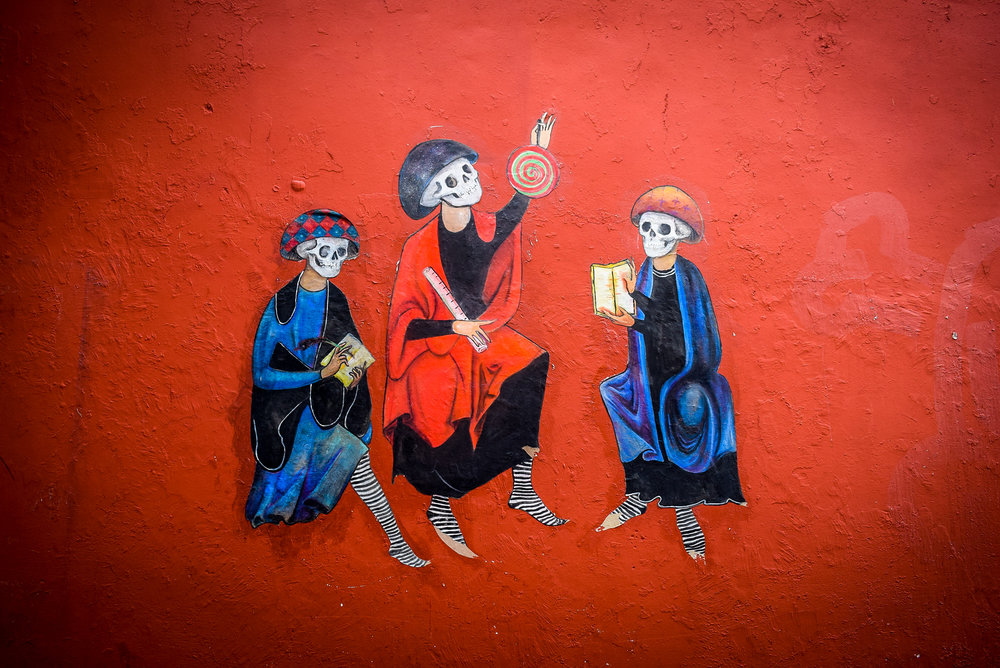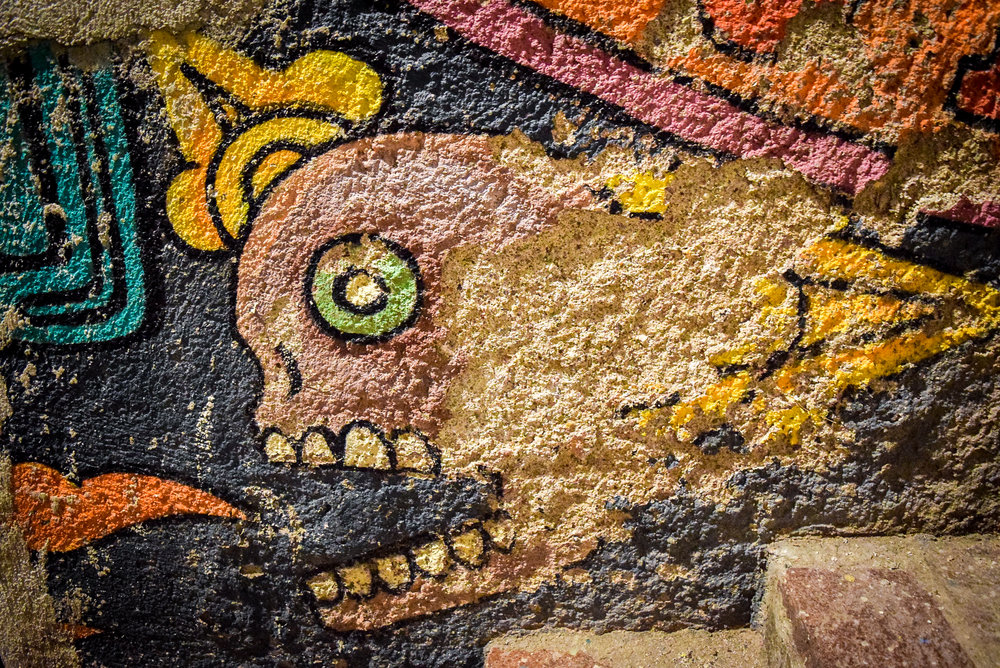Mexico, Te Amo: 13 Reasons Why I Fell in Love with the Country
I'm goin' way down south, way down to mexico, way.
Alright, I'm goin' way down South, way down where I can be free.
-"Hey Joe" (Jimi Hendrix)
#1. The first bite of a gordita de nata
With a subtly sweet scent, you can expect the comforting smell of gorditas de nata to entice you long before you ever see them. This handmade delicacy, which is typically sold by street vendors who slowly fry the pastry on portable stoves, obtains its mild nutty flavor from one special ingredient: the thin layer of film that forms on the top of milk which has been freshly boiled. This simplistic yet delicious little treat is enough to win over even the coldest of hearts.
Tip: Avoid the tiny gorditas sold on the streets of Mexico City because they tend to break apart before you have a chance to pop them in your mouth. The best gorditas I ever ate in Mexico - soft but chewy, mild but mouthwatering, oh so good! - were found on the streets of Guanajuato.
#2. Warm smiles
While the media continues to portray Mexico as a dangerous country full of drug-related violence (and definitely in some areas it fulfills this stereotype), the vast majority of the country is full of everyday citizens who are some of the warmest and most curious people you'll meet. Even though my knowledge of Spanish is well below beginner level, I've found that wherever I go in Mexico, the people always make me feel welcome.
#3. Streets brimming with old VW Beetles
No matter where you go, from the tranquil beach towns on the coast of Oaxaca to the bumper-to-bumper streets of Mexico City to the all-inclusive resorts in the Yucatan peninsula, and everywhere in between, you'll find Mexico has an extensive collection of old Volkswagen Bugs that bring a fun, retro mood to the country's streets and alleyways.
#4. Heritage cities like Guanajuato and San Miguel de Allende
The UNESCO designated city of Guanajuato (a visitor's guide for first-timers can be found here), scenically located in a long and narrow valley in the state of the same name, features beautiful colonial-style buildings, colorful cathedrals, small winding streets, and perhaps one of the most peculiar tourist attractions in Mexico: the Museo de las Momias de Guanajuato, a museum filled with naturally mummified bodies, some of which have disturbing looks of horror on their faces.
The town of San Miguel de Allende (a complete guide of what to see, where to eat, and other useful info can be found here) is equally charming with long cobblestone streets, brightly colored homes, and a nice city plaza surrounded by outdoor cafes, restaurants, and bars - the perfect place to people watch and while away an afternoon.
While both cities are usually busy with both national and international visitors, San Miguel de Allende is home to a large expat community mainly comprised of Americans and Canadians - English can be heard spoken all over town.
#5. The proper way to drink tequila
Tequila isn't meant to be downed in one sip from a shot glass à la college kids worldwide; in Mexico it's savored slowly, usually served neat, and there are countless craft distilleries to choose from.
Tequila's closest relative, mezcal, is also made from the agave plant and most commonly produced in the state of Oaxaca. In most mezcalerias you'll find a huge selection of this drink, which is typically served with slices of fresh fruit, usually something citrus like grapefruit or orange, and a side of worm salt made from crushed larvae and ground chili peppers (trust me, it's good). You may also hear this phrase on occasion: Para todo mal, mezcal, y para todo bien, también (For every ill, Mezcal, and for every good as well)!
#6. The country's love of everything picante and how your own tolerance grows
When you spend enough time in Mexico and eat the local food, your tolerance for spicy foods gets higher and higher, until finally you're holding your own and dousing tacos in the same hot sauce Mexicans use - whether your stomach likes it or not.
#7. Mole!
Aromatic, sweet, tangy, distinctive - Mole is a sauce hard to describe. This delicious staple of Mexican cuisine is typically comprised of a mix of spices, chili, nuts, and chocolate, although the ingredients can vary from region to region, and can be served over enchiladas, tamales, and more.
The best mole I had in Mexico was from a restaurant called Azul Histórico, which can be found inside the charming DOWNTOWN building in Mexico City's Centro Histórico.
Looking for somewhere to stay in Mexico?
#8. The beaches of Zipolite and the coast of Oaxaca
Mexico's Pacific Coast is a treasure to behold. Rocky cliffs stagger off into the ocean while a heavy surf (the place to go in Mexico for die hard and amateur surfers alike) constantly pounds the coastline. Not only is it postcard-beautiful, but the coast of Oaxaca along with it's beach bum towns (of which Zipolite is my favorite) and hippie vibe is a pretty good choice for anyone looking to get away from the all-inclusive boom on the Caribbean side of the country.
There are hardly any organized activities or tours here, like the ones you would find in an all-inclusive resort, so don't expect constant entertainment. Zipolite and the coast of Oaxaca is a place for relaxation and being as lazy as you like.
#9. Forget corona - Mexico has a huge variety of Craft Breweries
There are numerous microbreweries operating across the country. Choosing to drink something that comes from a 100% Mexican owned business supports locals and their creative, delicious, one-of-a-kind cervezas artesanal.
One brand you need to try is Cervecería Allende, which brews distinct ales in their factory in San Miguel de Allende. The cerveza con agave is an interesting choice with unexpected flavor due to the use of the agave plant (typically used to produce tequila and mezcal), but my true favorite was the cerveza obscura because of it's soft caramel aftertaste and creaminess.
A cool place to drink craft beers is at Crisanta in Mexico City. They have a huge menu of cervezas from breweries all over Mexico and a relaxed vibe in their clean and modern restaurant.
#10. Helados of every flavor
There are fantastic ice cream shops and roadside vendors all over the country - Mexico City has some great options - but in the town of Dolores Hidalgo you'll find a unique assortment of flavors sold by locals on the street. Everything from chicharrón (fried pork) to aguacate (avocado) to camarón (shrimp) is available for those brave enough to try. If you get the chance, don't miss out on some tequila or whiskey flavored helado.
#11. Mexico's extensive (and sometimes luxurious!) bus network
In all of North America, Mexico has by far the best and most luxurious bus network I've ever seen. Here's what's included in the most expensive of bus tickets: wide comfortable seats with foot rests, leg room for even the tallest of passengers, personal touchscreen TVs with current movies and music, free Wi-Fi, sandwiches, snacks, and drinks (water, juice, pop), and separate male and female bathrooms.
There are, of course, also cheaper options that are still exceptionally comfortable (at least much more so than any Greyhound in Canada or the USA), but these might not include sandwiches, drinks, or the personal TV screens.
Most bus connections between major cities in Mexico depart several times per day and tickets can generally be bought right up to departure time at the bus station.
#12. The music of ZOÉ
With numerous singles and albums released over the last 20 years, a couple of Latin Grammy nominations and wins, Mexican rock band Zoé is hugely popular in the country today and still making music that transcends time and language.
Lead singer León Larregui is an added bonus!
#13. Skull street art everywhere
It's obvious that Mexico has a love of skulls. Thanks to their Dia de los Muertos (Day of the Dead) celebrations at the end of October and beginning of November each year, where the main representations are colorful and festival skeletons named Catrina and Catrin, skulls have become deeply ingrained in Mexico's culture and you can expect to find different portrayals of them in the form of street art all across the country.
Are you planning a trip to Mexico?
Get the most relevant, up-to-date advice on top attractions, off-the-beaten-path destinations, and plenty of other useful information in Lonely Planet's Mexico guide book! I can personally recommend it as this guide truly helped me plan out my travels through this vibrant country.


.jpg)
.jpg)













.jpg)